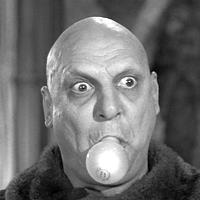
Blichmann Therminator cleaning
#1

Posted 28 December 2010 - 10:05 PM
#2

Posted 29 December 2010 - 05:49 AM
#3

Posted 29 December 2010 - 06:30 AM
#4

Posted 29 December 2010 - 06:40 AM
#5

Posted 02 January 2011 - 06:57 PM
#6

Posted 02 January 2011 - 07:20 PM
#7

Posted 02 January 2011 - 08:22 PM
#8

Posted 02 January 2011 - 08:31 PM
I crank the temp up to 500, not because it's necessary to kill all the microorganisms, but to, as much as possible, reduce the hop debris to as close to an ash-like consistency as possible. I find I get more of the hop bits out that way (obviously flushing afterward).You actually don't need to get it up to 500F. Here's John Palmer's chart on dry heat sterilization from How To Brew: https://www.howtobre...apter2-2-3.htmlI put mine in the oven on 285 for 3 hours on time-bake the night before brewing.I would pump hot PBW or caustic through it for 30 minutes. If you can get an acid cleaner I would pump that through first to help remove beerstone.Either way the oven should kill anything.
#9

Posted 02 January 2011 - 08:58 PM
#10

Posted 02 January 2011 - 10:15 PM
#11

Posted 05 January 2011 - 07:57 PM
+1I crank the temp up to 500, not because it's necessary to kill all the microorganisms, but to, as much as possible, reduce the hop debris to as close to an ash-like consistency as possible. I find I get more of the hop bits out that way (obviously flushing afterward).
#12

Posted 06 January 2011 - 08:19 AM
1 user(s) are reading this topic
0 members, 1 guests, 0 anonymous users












